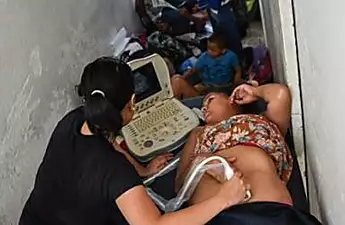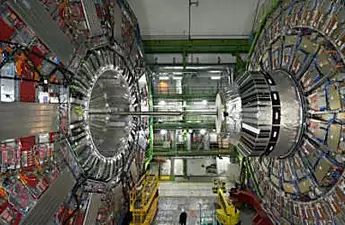
TIJUANA (MEXICO) -
Tension mounted as hundreds of Central American migrants massed at a Mexican border town headed on Thursday for a bridge crossing to the United States as President Donald Trump renewed his threats to repel them.
With US helicopters hovering overhead, a group made up mostly of men headed just after midday from the shelter they have been staying at since last week to the El Chaparral bridge around a kilometer (half a mile) away in Tijuana, just across the border from San Diego, California.
Trump on Thursday threatened to close the border altogether, having previously deployed nearly 6,000 troops to erect concrete barriers and razor-wire fences to deter what he has called an "invasion."
"If we find that it gets to a level where we are going to lose control or where people are going to start getting hurt, we will close entry into the country for a period of time until we can get it under control," Trump told reporters, before firing a warning to Mexico.
"The whole border. I mean the whole border," he said, adding that "Mexico will not be able to sell their cars into the United States."
Tensions rose at the border when a local official and a human rights activist tried to convince the migrants both of the benefits of remaining in Mexico, and to submit their US asylum requests through official channels.
"We don't want to!" shouted the migrants before continuing on to the bridge.
"Let us cross now, we're already desperate, we've left family in Honduras, we need to work," said a man called Wilson.
Authorities in Tijuana set up a job fair in an attempt to recruit skilled workers among the migrants for the benefit of local companies, while Mexico's migration agency has offered them temporary residency papers.
Some have taken advantage of the offers but others are simply determined to reach the US.
Since setting out more than a month ago, mostly from from Honduras, thousands of migrants -- including many women and children -- have covered about 4,400 kilometers (2,700 miles), either walking or hitchhiking, before the first groups began reaching Tijuana at the end of last week.
But there have been tensions since they started arriving at the border town, particularly in the shelter housing around 4,500 Central Americans.
The migrants are mostly fleeing poverty and unrest in Central America's "Northern Triangle" -- El Salvador, Guatemala and Honduras, where gang violence has fueled some of the highest murder rates in the world.


![[Gallery] Things Flight Attendants Notice About Passengers In 3 Seconds [Gallery] Things Flight Attendants Notice About Passengers In 3 Seconds](https://images.outbrainimg.com/transform/v3/eyJpdSI6ImJlNjg4OGE5MjhjNzY1MzYwZTMxYTI5MzNhZjg3OTRhMzIyYzhiODZlN2M2YjMxN2M4YWE0Njc0MGE1OGI1OTkiLCJ3IjoyMzAsImgiOjE1MCwiZCI6MS41LCJjcyI6MCwiZiI6MH0.webp)










![[Gallery] These Ridiculous Airport Photos Will Make You Cry Laughing [Gallery] These Ridiculous Airport Photos Will Make You Cry Laughing](https://images.outbrainimg.com/transform/v3/eyJpdSI6ImJkMzA1NWQwYjQ1NzFmZTg4ZTkyOTIxM2ZiMDJjY2Q4ZTE5YjM2OTczMWMxODdmZTBmYjkwZjQ2NjMzOTM2OWEiLCJ3IjoyMzAsImgiOjE1MCwiZCI6MS41LCJjcyI6MCwiZiI6MH0.webp)
![[Pics] 'Evidence of life on Mars' found in NASA Spirit rover Stunning images. [Pics] 'Evidence of life on Mars' found in NASA Spirit rover Stunning images.](https://images.outbrainimg.com/transform/v3/eyJpdSI6ImQ3ZjY2ZmI0Nzk4OTg3NTA5MTA4MzYzMTc0ZWJlNTI2NzAwMWI3MmNhNzkyOGUwOTA4OTgxN2UxY2FhZjIxMjYiLCJ3IjoyMzAsImgiOjE1MCwiZCI6MS41LCJjcyI6MCwiZiI6MH0.webp)





No comments:
Post a Comment